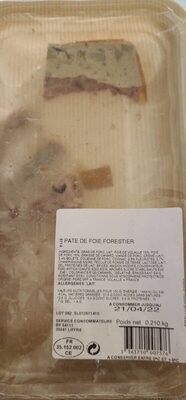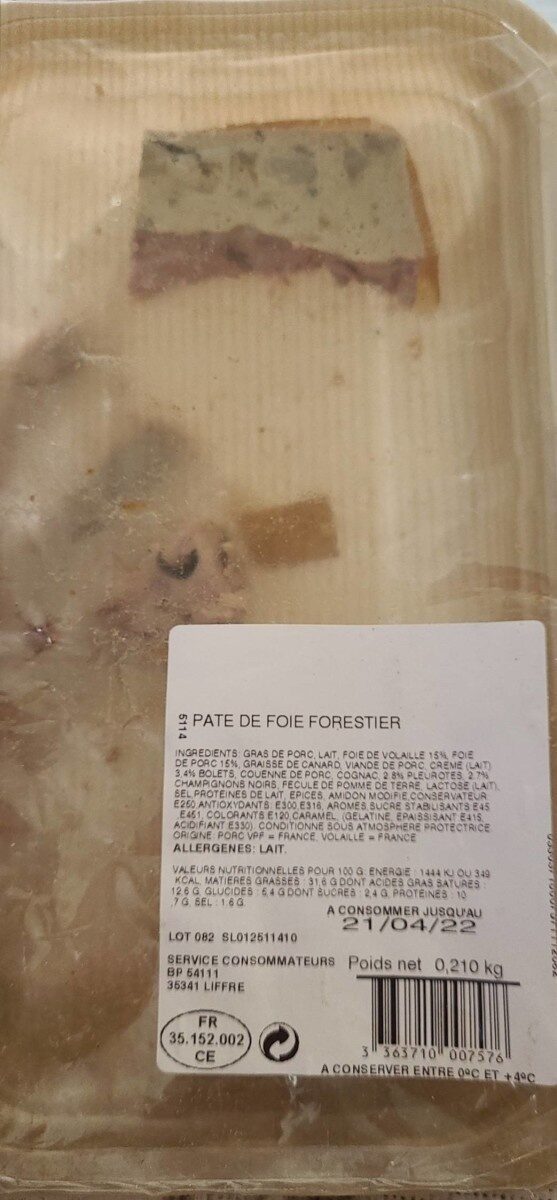pâté de foie forestier - Clermont - 210 g
This product page is not complete. You can help to complete it by editing it and adding more data from the photos we have, or by taking more photos using the app for Android or iPhone/iPad. Thank you!
×
Barcode: 3363710007576 (EAN / EAN-13)
Quantity: 210 g
Packaging: fr:Barquette plastique recyclable, fr:Film plastique jetable
Brands: Clermont
Categories: Meats and their products, Meats, Prepared meats, fr:Charcuteries diverses, Pâté, Liver Pâtés
Origin of ingredients: fr:porc VPF = france
Manufacturing or processing places: france Bretagne 35341 liffré
Traceability code: FR 35.152.002 CE - Liffré (Ille-et-Vilaine, France)
Countries where sold: France
Matching with your preferences
Environment
Packaging
Transportation
Report a problem
Data sources
Product added on by lolo25
Last edit of product page on by kiliweb.
Product page also edited by openfoodfacts-contributors, packbot, quechoisir, roboto-app, vaporous, yuka.sY2b0xO6T85zoF3NwEKvlnxWVMrFqxj9CBPTlmCs5YzeNbPSfuNp6LPEYqs.










